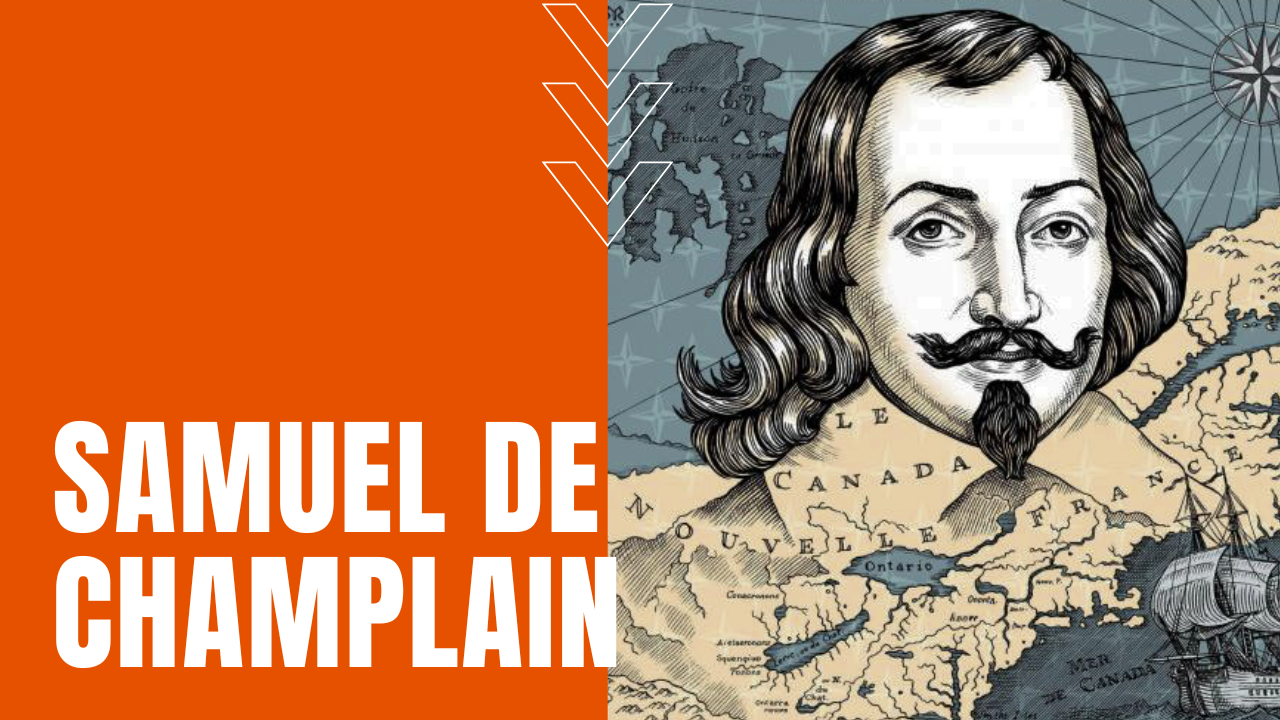Samuel de Champlain

Born in 1574 Brouage France, Samuel de Champlain traveled to Spain and the West Indies with his uncle, before accepting a job as a cartographer for King Henry IV from 1601 to 1603. Sailing to Canada in 1603, under the command of François Gravé Du Pont, the group sailed up the St. Lawrence and Saguenay rivers, further exploring the Gaspe Peninsula before arriving into Montreal.
Early Experience at Sea
Proving his usefulness on Du Pont’s expedition, in 1604, Champlain was named geographer on an expedition to Acadia under the command of Lieutenant-General Pierre Du Gua de Monts, exploring present-day Nova Scotia, the Bay of Fundy and the St. John River before building a fort on a small island atop the St. Croix River to wait out the winter months. In the summer of 1605, de Monts’ team sailed down the coast of New England to Cape Cod, where Champlain became the first European explorer to write a detailed accounting of present-day Plymouth Massachusetts, a solid fifteen years before English Pilgrims settled in the region.
Rising in Rank
Advancing to the rank of lieutenant under de Monts, in 1608, the group again explored the St. Lawrence, building a fort at present-day Quebec City, which would soon become the teeming heart of the French fur trade. Voyaging deep into the Canadian interior in 1615, Champlain and his team of Huron People attacked the Iroquois, resulting in the aggressor’s defeat when Champlain took an arrow to a knee. Unable to walk, Champlain wintered with the Hurons near Georgian Bay, composing one of the most detailed accounts of its time of Native American life. Returning to France to face a withering string of lawsuits, Champlain composed a number of accounts of his voyages, replete with maps and illustrations, returning to Canada after his commission was reinstated, with a new wife 30 years his junior.
Appointed Governor
Appointed governor of New France by Louis XIII’s chief minister, Cardinal Richelieu, French control of the lucrative Canadian fur trade was soon displaced by the English, who lay siege to the fort until Champlain surrendered on July 19th, 1629. Returning to France until the signing of the Treaty of Saint-Germain-en-Laye, which handed Quebec back to the French, Champlain returned to Quebec yet again as its governor, retiring in 1633 due to failing health, before passing away on Christmas Day, 1635, making the life and voyages of Samuel de Champlain, an keystone figure during the Age of Exploration.
